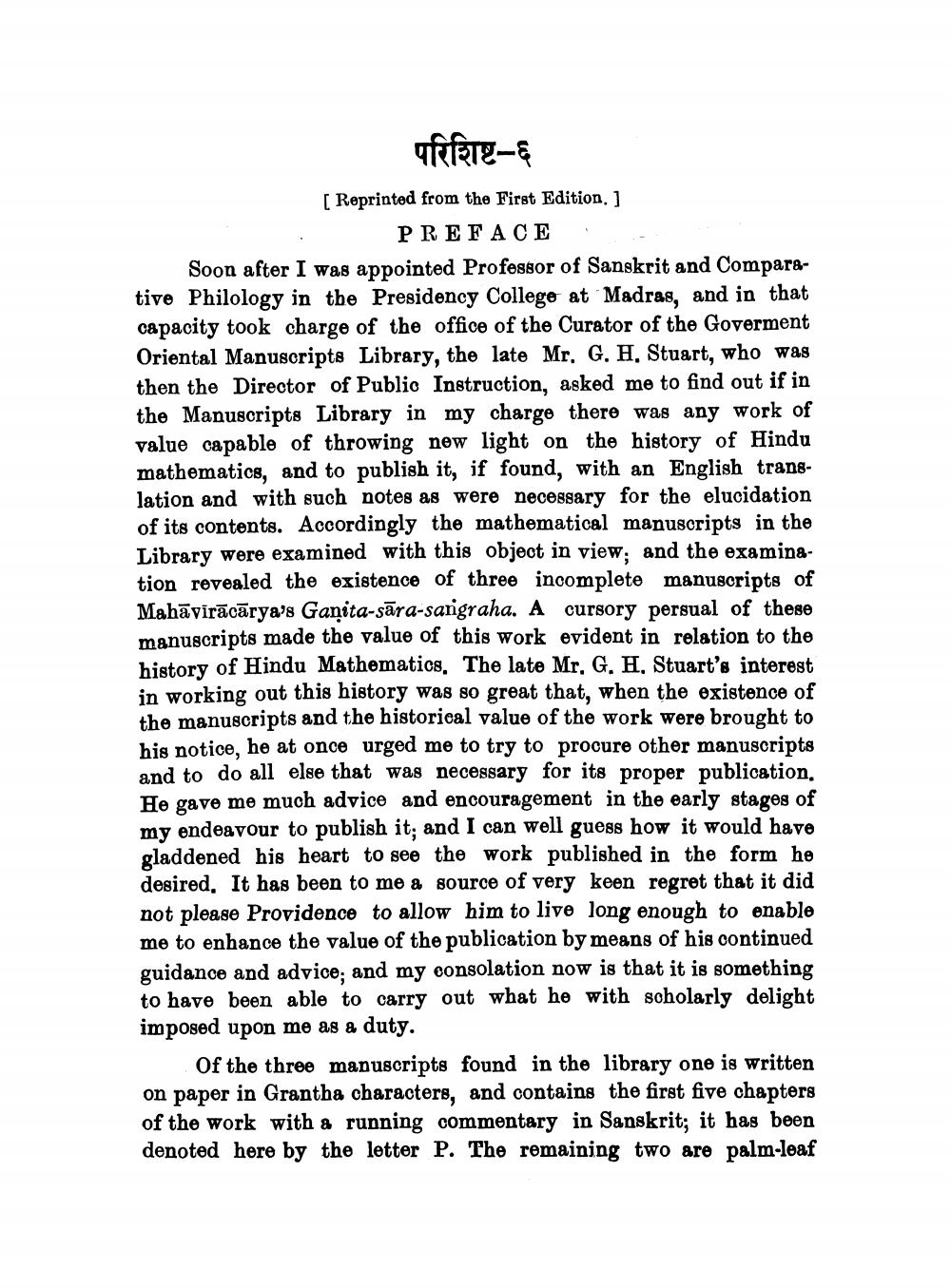________________
परिशिष्ट- ६
[Reprinted from the First Edition. ]
PREFACE
Soon after I was appointed Professor of Sanskrit and Comparative Philology in the Presidency College at Madras, and in that capacity took charge of the office of the Curator of the Goverment Oriental Manuscripts Library, the late Mr. G. H. Stuart, who was then the Director of Public Instruction, asked me to find out if in the Manuscripts Library in my charge there was any work of value capable of throwing new light on the history of Hindu mathematics, and to publish it, if found, with an English translation and with such notes as were necessary for the elucidation of its contents. Accordingly the mathematical manuscripts in the Library were examined with this object in view; and the examination revealed the existence of three incomplete manuscripts of Mahaviracārya's Ganita-sara-sangraha. A cursory persual of these manuscripts made the value of this work evident in relation to the history of Hindu Mathematics. The late Mr. G. H. Stuart's interest in working out this history was so great that, when the existence of the manuscripts and the historical value of the work were brought to his notice, he at once urged me to try to procure other manuscripts and to do all else that was necessary for its proper publication. He gave me much advice and encouragement in the early stages of my endeavour to publish it; and I can well guess how it would have gladdened his heart to see the work published in the form he desired. It has been to me a source of very keen regret that it did not please Providence to allow him to live long enough to enable me to enhance the value of the publication by means of his continued guidance and advice; and my consolation now is that it is something to have been able to carry out what he with scholarly delight imposed upon me as a duty.
Of the three manuscripts found in the library one is written on paper in Grantha characters, and contains the first five chapters of the work with a running commentary in Sanskrit; it has been denoted here by the letter P. The remaining two are palm-leaf




